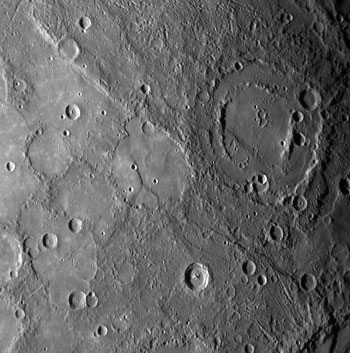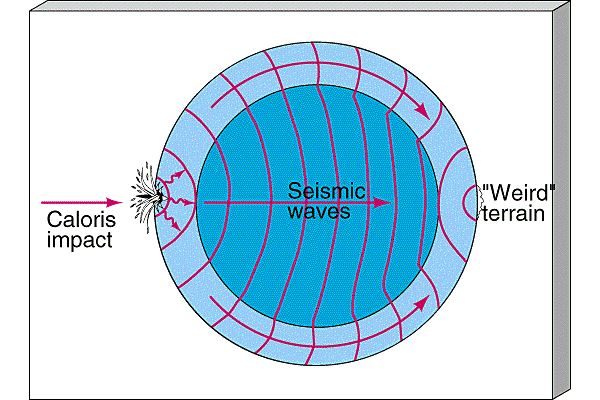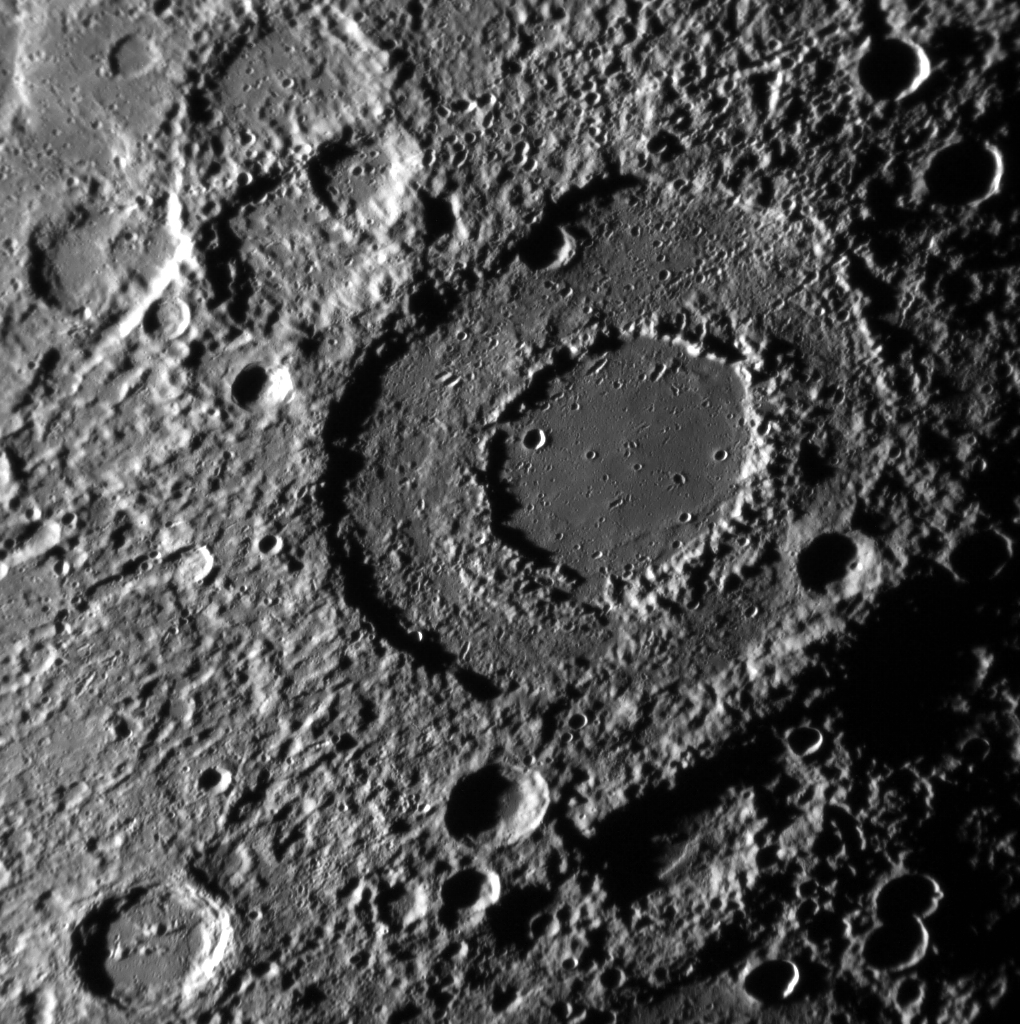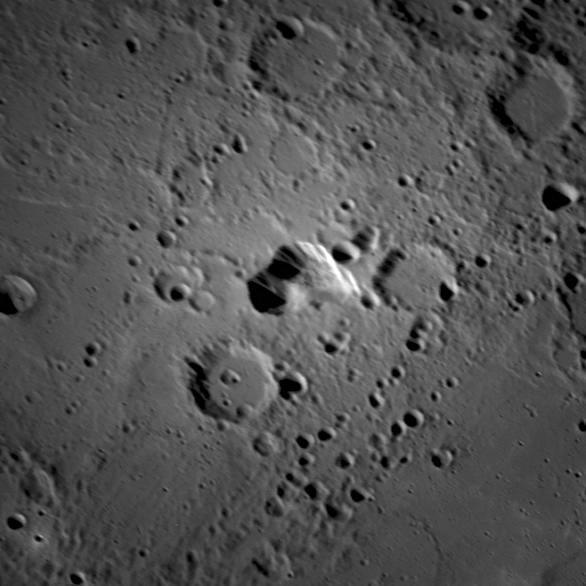Only two spacecraft missions have been to Mercury.
The first mission occurred more than 30 years ago in the form of Mariner10.
From that mission, the following attributes of Mercury
have been constructed.
The overall geological and structural features of Mercury are the following:
- Its density is 5.4 g/cc meaning that it must have a relatively large
nickel-iron core. The core is estimated to occupy 42% of the volume of the planet
(on the Earth, our core occuppies 17% of our volume)
- This nickel iron-core creates a weak magnetic field (1% of Earth's).
The core is surrounded by
a substance similar to the Earth's mantle.

(Image: NASA/JPL)
- There is no atmosphere because Mercury has insufficient gravitational field to
hold onto what would be a very hot atmosphere. As a result, surface daytime temperatures
can reach to 450 degrees centigrade.
- Mercury may have been approximately twice as massive when it initially formed but,
like the mechanism that formed the Earth's moon, Mercury was likely struck by a very
large planetisimal which blasted away 1/2 of this mass.
- The surface of Mercury is heavily cratered.

- The Caloris Basin, the largest
preserved impact on any planetary surface (crater diameter = 1300 km!), is an example of bombardment by large objects,
such as that which formed the lunar maria.

- This impact was so large that seismic disturbances were transmitted completely
thorugh the planet producing a jumbled terrain opposite of the impact:

- There are significant plains on Mercury with one plain being less heavily cratered
(and therefore younger) than the other plain. These plains appear to be lava flows.
- There are also long, linear folds on the surface which are thought to represent
a relatively rapid cooling and contraction of the Protoplanet Mercury.
- Recent radar mapping observations have shown that in the deepest craters near the
poles, where the surface is never exposed to direct sunlight, there appears to be deposits
of water ice. The depth of this ice is just a few meters and the total ice content is about
10,000 times less than the Antarctic ice sheet of Earth
New Views of Mercury From Messenger
Messenger is the first satellite to orbit Mercury. It entered orbit in 2011 and has taken
125,000 images
- Caloris basin larger than estimate from Mariner 10 images:


Image credit:
NASA/Johns Hopkins University Applied Physics Laboratory/Carnegie Institution of Washington
- Inside Caloris Basin is a weird feature officially called Pantheon Fossae or
informally, "the spider".

- Discovery of double ring craters that are signatures of a different kind of impact
process involving larger objects (20-50 50 km projectiles) that don't make single craters
with a central peak, but instead fracture the surface. The ejecta blanket often consists
of large junks of material that form lines of secondary craters.

Image credit:
NASA/Johns Hopkins University Applied Physics Laboratory/Carnegie Institution of Washington
- Discovery of shield volcanoes for the first time on Mercury:

Image credit:
NASA/Johns Hopkins University Applied Physics Laboratory/Carnegie Institution of Washington
Shield volcanoes are features built up from lava flows resulting in a broad, gently
sloping volcano (height to width ratio ~ 1:20). An Earth analogue is the Hawaiian Island
chain.
- Volcanic vents:

- Water is discovered in the Exosphere of Mercury.
An Exosphere is a very thin "atmosphere" of charged particles than are embedded in the magnetic
field of a planet. Surprisingly, this "atmosphere" does have a high relative abundance of
water ions on it (relative to other ions).
- The water could come from comets.
- The process of chemical sputtering could create water where none existed
before from the ingredients of solar wind and Mercury rock. Chemical sputtering is a process
that occurs when high velocity ions (from the solar wind) hit rocks and cause chemical
reactions. The solar wind has plenty of hydrogen (protons) and the rocks on Mercury have
a lot of oxygen in them, in the form of SiO2, (just like earth surface rocks), so
this mechanism may be at work. (Doesn't explain the possible desposits of ice, however).
Mercury Orbit
One Mercury day equals 176 Earth days, yet one Mercury year equals 88 days - exactly
half of the Mercury day. One complete spin rotation on its axis occurs every 59 days, exactly 2/3 of the planet's orbital period of 88 days. These times are not coincidental.
This is called a 3:2 spin-orbit resonance such that Mercury completes 3 spins (360 degree
rotations) for every 2 orbits. Like our tidally locked moon, Mercury is influenced by
the Sun's tidal forces. However, unlike the Moon, Mercury's orbit is more eccentric and thus one
side doesn't always face the Sun (1:1 spin-orbit resonance). Instead when
Mercury is at it's closest point to the sun, the tidal forces balance such that the densest
part of Mercury is in line with the direction of the sun.













